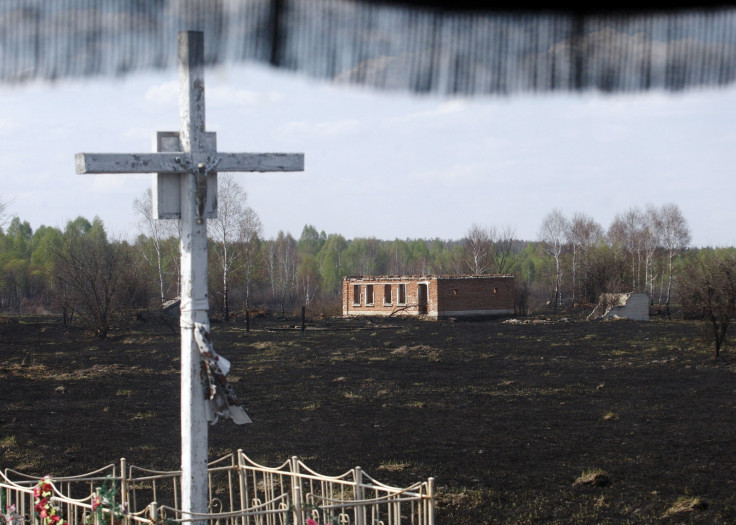Radiation spike recorded after Chernobyl wildfire

Nuclear inspectors have recorded a significant increase in radiation in the Chernobyl exclusion zone, after wildfires tore through forest near the devastated nuclear power station.
Radiation recordings in the Polesskoye settlement, which was abandoned after the 1986 nuclear reactor explosion, show air contaminated with 10 times the normal levels of deadly cesium-137, The State Nuclear Regulatory Inspectorate of Ukraine announced.
Cesium-137 is one of the most dangerous elements released in a nuclear explosion, and can cause leukemia after accumulating in the body.
The agency said that the radiation released so far in the fire posed no danger yet to those living near the exclusion zone.
"In other words, the data available from the existing systems monitoring the radiation situation in the exclusion zone and adjoining territories indicate the changes in the basic parameters of the radiation situation, except for those in the fire-affected areas, do not exceed the levels acceptable in the given territories. In Kiev, the radiation level is at the level of the natural background," the watchdog said, reports Russian state news agency Itar Tass.
Keith Baverstock, a former health and radiation adviser at the World Health Organisation, said that the Cesium-137 would only be a serious danger if the wind direction changed to blow the chemical in the direction of the closest population centres, and further afield.
Ukranian capital Kiev lies only 132 km (82m) downwind of the current blaze, and Minsk, capital of Belarus, 342 km (213 m) north-west. The surrounding region is now largely deserted after the Soviet government resettled 116,000 people in the wake of the disaster.
"The real problem would be if the wind strength increased and fire got out of control. If there are very strong winds and they were blowing from east to west – as does happen in summer – it could be a risk to Europe," he said.
Baverstock said that in the wake of the disaster, Cesium-137 was absorbed into the soil, and from, there into organic matter including tree bark and leaves. In forest fires, the chemical can be released into the atmosphere again, and can cause cancer to those who inhale it, or enter the food chain if ingested by animals.
Reports indicated that the fire is currently some distance from the main reactor, which is covered by a crumbling concrete dome, or the Red Forest, the 10 km zone around the reactor, believed to be one of the most radioactively contaminated areas in the world.
The wildfire tore through 130 hectares on Tuesday June 30, Ukrainian authorities said. The State Emergency Service of Ukraine said it deployed 117 firefighters and 24 units of equipment to bring the blaze under control. Baverstock said that emergency services would likely be equipped with specialist breathing equipment when tackling the blaze.
In the immediate wake of the blaze, Ukrainian authorities said that radiation levels at the site had not changed, AFP reported.
In May, a wild fire in the area spread across 400 hectares, but authorities claimed there was no serious spike in radiation.
A 20 mile (30km) exclusion zone was imposed around Chernobyl in the wake of the 1986 disaster.
© Copyright IBTimes 2025. All rights reserved.






















